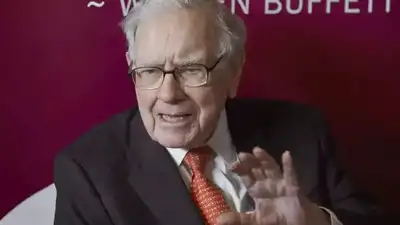Warren Buffett shares one ‘simple’ tip for evaluating a company before investing and how to avoid costly mistakes | Business

Warren Buffett, the billionaire investor behind the success of Berkshire Hathaway, is widely admired not just for his wealth, but for his simple, time-tested investment philosophy. One of his most powerful ideas is the “circle of competence” — the concept that you don’t need to understand everything about every business to be a great investor. Instead, staying within your intellectual comfort zone is the key to making rational, long-term decisions. As Buffett once wrote, understanding your limits is more important than having a vast amount of knowledge. This principle still offers a practical framework for anyone looking to invest wisely in today’s fast-paced market.
What is Warren Buffett’s ‘viral tip’ before investing
Warren Buffett introduced the idea of a “circle of competence” in his 1996 letter to Berkshire Hathaway shareholders. He explained:“You don’t have to be an expert on every company… You only have to be able to evaluate companies within your circle of competence. The size of that circle is not very important; knowing its boundaries, however, is vital.”Simply put, a circle of competence is the area where your knowledge and expertise allow you to make sound decisions. Rather than spreading your investments thin across unfamiliar sectors, Buffett advises focusing on industries and companies you truly understand.
How Warren Buffett’s investing style helps avoid costly mistakes
Buffett’s approach is built on avoiding avoidable mistakes, rather than chasing maximum returns. The more familiar you are with a business model — how it earns money, its market demand, its competition — the less likely you are to be misled by market noise or hype. According to Pamela Sams, a financial advisor at Jackson Sams Wealth Strategies:“Buffett’s style keeps you focused on what the business does and why it matters. That’s how you avoid mistakes and busted portfolios.” This method protects investors from emotionally driven decisions and emphasizes clarity over complexity.
Real-world examples from Warren Buffett’s portfolio
Buffett invested in Coca-Cola when others doubted the move. His rationale wasn’t based on stock price speculation — he recognised the brand’s global reach, strong pricing power, and customer loyalty. These traits made it a stable, long-term investment well within his circle of competence.Buffett has held onto See’s Candies for decades because of its reliable earnings, brand loyalty, and scalable business model. He understood the company deeply and valued its consistent performance over time.
- Avoiding the Dot-Com Bubble
During the internet boom of the late 1990s, Buffett avoided tech stocks because they didn’t fit his knowledge base. That decision, ridiculed by some at the time, saved him and Berkshire Hathaway from the losses that followed the dot-com crash.
How to apply Warren Buffett’s circle of competence rule in your own investing
- Know what you know and what you don’t
Begin by identifying industries, products, or services you understand. This might stem from your profession, hobbies, or personal use. For example:
- If you work in healthcare, you may understand pharmaceutical companies.
- If you’re a tech enthusiast, certain consumer electronics brands might fall within your circle.
- Evaluate companies Like Buffett would
When analysing a company:
- Ensure the business is easy to understand.
- Look for a durable competitive advantage (brand, scale, switching costs, etc.).
- Prioritise stable, predictable earnings over speculative growth.
- Consider management quality and their track record in capital allocation.
Buffett initially avoided tech companies, viewing them as unpredictable. But over time, he saw that Apple’s brand loyalty, ecosystem lock-in, and customer retention made it resemble a consumer staple, not just a tech firm. This shift illustrates that your circle of competence can expand — but only through genuine understanding, not overconfidence.
Common mistakes to avoid when applying this rule
- Chasing trends outside your circle
Jumping into cryptocurrency, AI startups, or biotech firms just because they’re trending can be risky — especially if you don’t understand how those businesses make money or how to assess their sustainability.
- Confusing familiarity with competence
Using a product doesn’t always mean you understand the company behind it. For example, loving a new gadget doesn’t automatically mean the stock is a good investment. Competence involves analyzing financials, industry dynamics, and leadership.
Warren Buffett’s tips for safely learning new industries
Buffett’s advice isn’t about staying stagnant. You can expand your circle by:
- Reading company annual reports and investor presentations.
- Following trusted financial experts and analysts.
- Taking time to understand how new industries function.
- But the expansion should be slow and deliberate. As Buffett often says: “Risk comes from not knowing what you’re doing.”
- Overconfidence in a new sector can lead to costly mistakes.
For everyday investors, the takeaway is simple but profound: You don’t need to know everything. You just need to know what you know — and invest accordingly.Also Read | Foxconn sells Lordstown plant for $88 million but keeps EV production running while expanding US growth plans





